Amen grows carbon-negative mycelium packaging to ship its candles
A range of candles by French brand Amen will be delivered in carbon-negative packaging made from mycelium and agricultural waste.
The brand hopes the packaging will help it tackle the hidden plastic waste associated with shipping fragile products such as candles, which often require bubble wrap or other plastics to protect them even if the outer packaging is plastic-free.
"Our candles are sold in porcelain jars and when we sent our first delivery to a partner store in the US, half of them broke during transport," Amen founder Rodrigo Garcia Alvarez told Dezeen.
"We obviously had to change our packaging but all the traditional solutions are made from plastic foam. The end customer just sees the recycled paper packaging but many brands use plastics alongside this to protect the product."
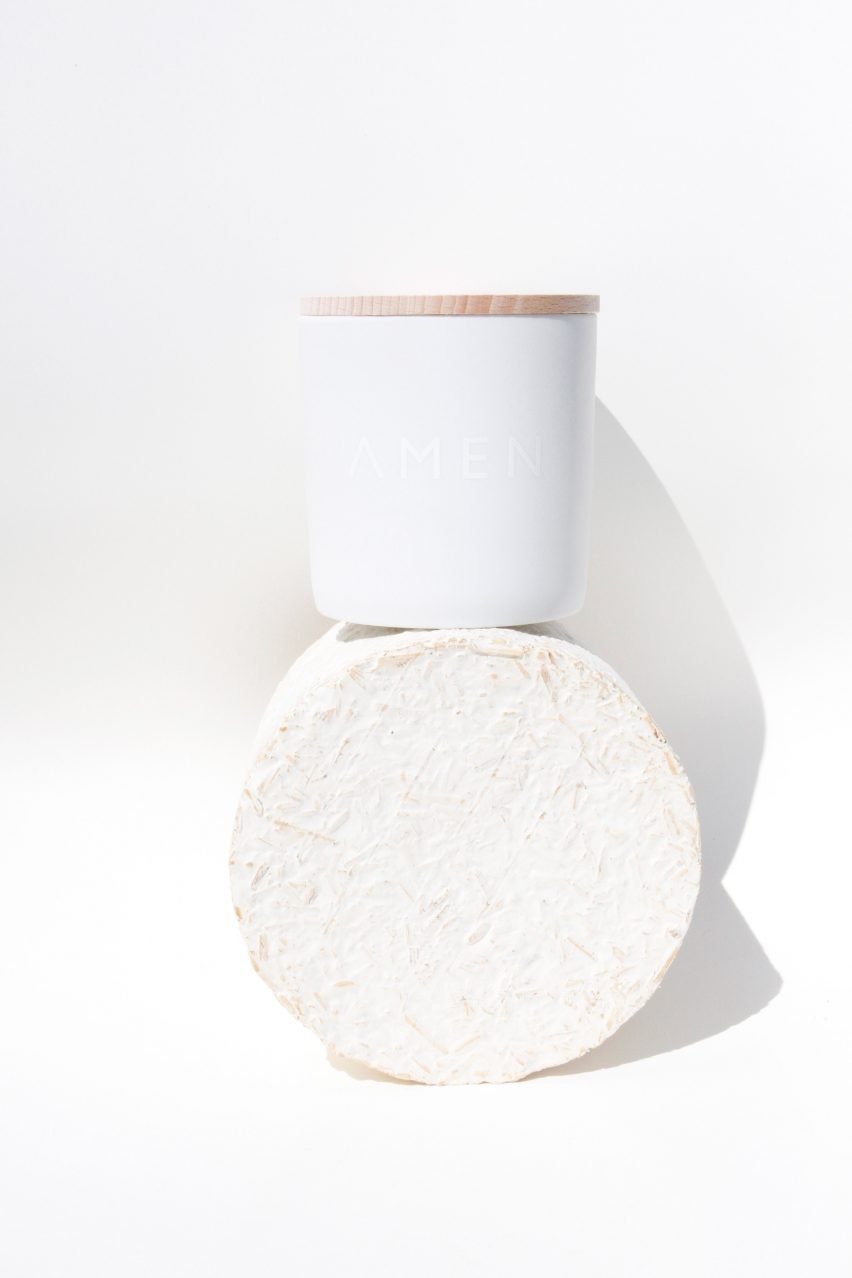
Amen prides itself in being a sustainable luxury candle brand, which uses natural wax made from vegetable oil instead of an animal byproduct like beeswax or petroleum-derived paraffin wax.
According to Alvarez, this focus on sustainability is especially important for ephemeral products like candles, and should also be extended to the packaging, in which they are shipped.
"I believe that an item designed for only 50 hours of use has to be much more careful in terms of its sustainability than an item that is more durable," he said.
"We refuse to use packaging that takes 500 years to decompose for a candle that only burns for 50 hours."
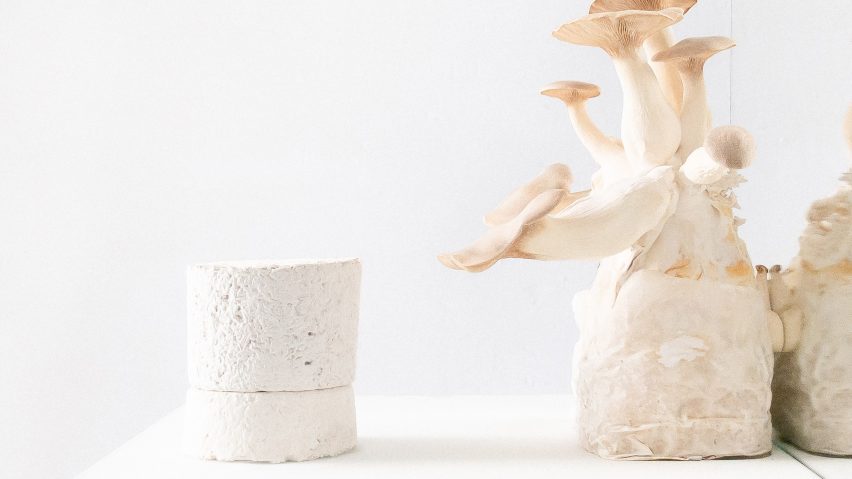
Amen teamed up with biotechnology start-up Grown, which helped to create The Growing Pavilion at last year's Dutch Design Week, to fashion a cylindrical box from mycelium to hold each individual candle.
Grown uses a manual process, developed by US material science company Ecovative, that takes seven days to complete and involves mixing the mycelium with agricultural waste such as hemp and placing it into a mould.
Mycelium is the filament structure that fungi use to grow, much like the roots of a plant, which starts to feed on the waste and grow to fill the shape of the mould while binding together the surrounding material.
After five days, the substrate is removed from the mould and dehydrated to prevent it from expanding further.
"This creates a solid packaging that remains biodegradable after use," said Alvarez.
"Plus, the process of creating it is actually capturing CO2 from the environment, which makes it a packaging solution that is not just not doing bad but actively doing good."
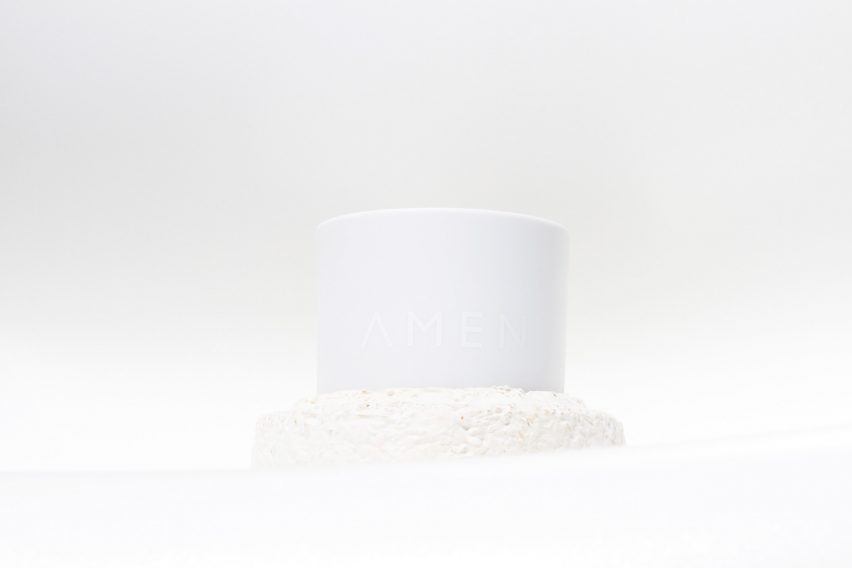
According to Grown founder Jan Berbee, the resulting packaging is carbon negative because throughout its life it has captured more carbon than is emitted during its production and transport.
This is mainly thanks to the agricultural waste contained within the material as fungi, unlike trees and plants, take in oxygen and release carbon dioxide as they grow.
"Agricultural waste absorbs carbon during its growth. Hemp, for example, absorbs roughly three kilograms of CO2 per kilogram of hemp," Berbee told Dezeen.
Part of this is offset by the carbon that is emitted in the process of making the packaging, including the growing, harvesting and processing of the mycelium, as well as the average journey of 200 kilometres to the customer.
But Berbee says a climate impact forecast and life cycle analysis conducted by Grown showed that, at the end of this journey, the packaging still stores more carbon than it has emitted.
"Of the 3.3 kilograms of CO2 that are captured in the process, only 1.5 kilograms are emitted, still leaving 1.8 kilograms of CO2 in the product," he explained.
"On the other hand, when styrofoam is delivered to a customer, the production, transport and raw materials have actually emitted 3.3 kilograms of carbon."
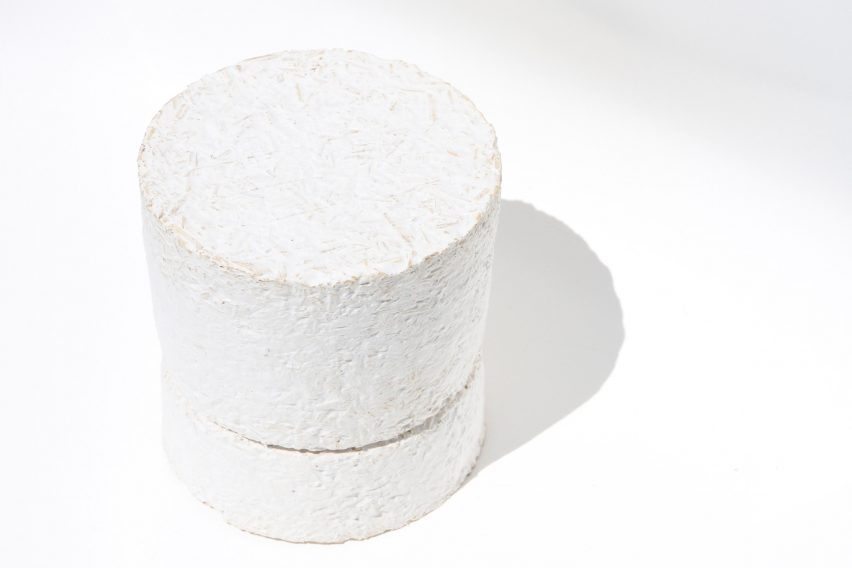
Alongside the launch of the new packaging, Amen hosted an exhibition and event series called Mushroom Conversations at Stuttgart gallery Kernweine, featuring work by Brazilian fashion designer and sustainability advocate Oskar Metsavaht, German fashion photographer Ellen von Unwerth and music by techno DJ Steve Rachmad.
The aim was to introduce mycelium packaging and its benefits into the world of luxury beauty and fashion, establishing it as a desirable product and encouraging its adoption by larger brands.
"Plastic was crazy expensive when it was invented in 1907," he said.
"But it has had a century of lobbyism and PR agencies behind it, to help it become widely adopted and affordable. We hope to accomplish the same for mycelium," he continued.
"Our objective is to get at least 10 high-end, luxury brands to incorporate the material by 2021. Through economies of scale, this would encourage the development of large, automated production processes, reducing the cost and allowing 100 smaller brands to adopt the packaging and so on until mycelium is a democratic and affordable material available to all."
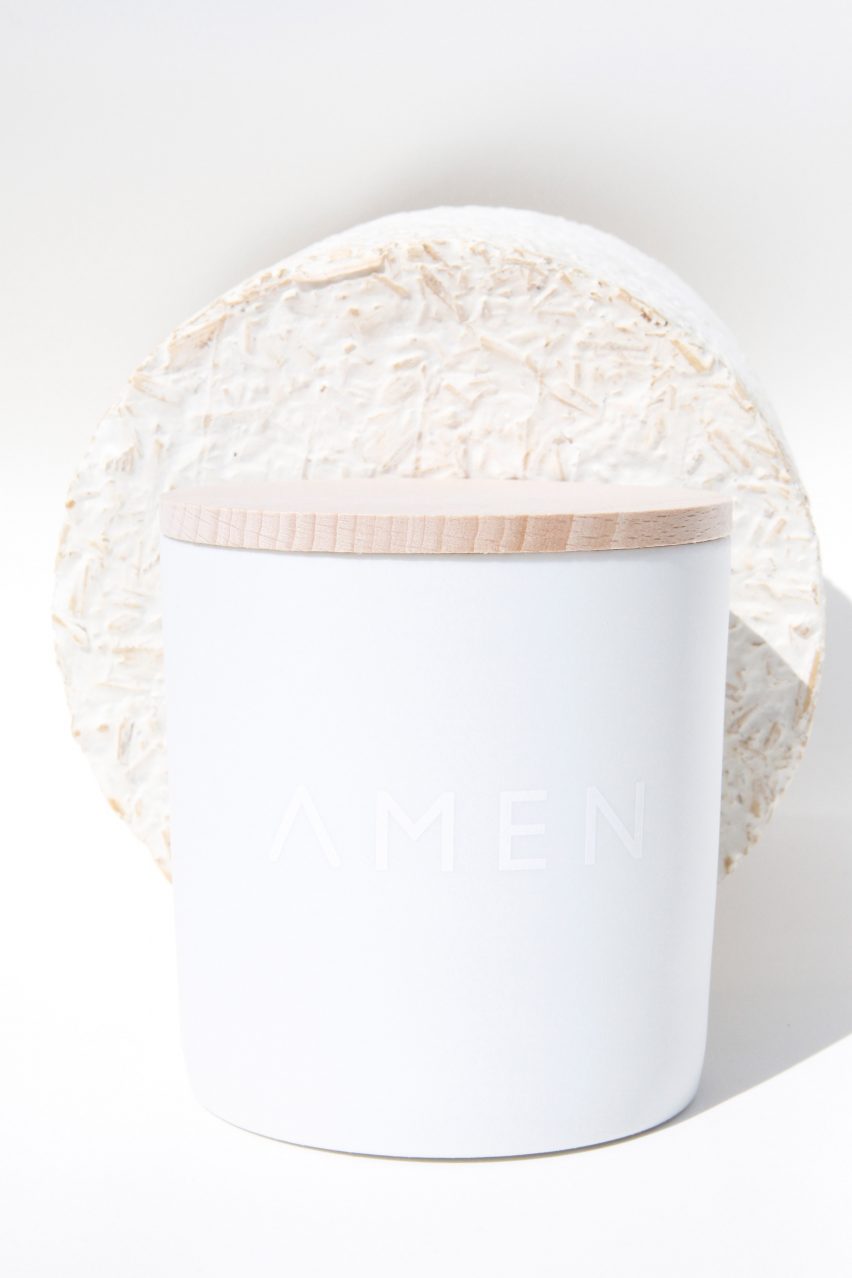
Mycelium has grown in popularity among designers and architects as an alternative to polluting, petroleum-based materials in recent years, with many using it create not just packaging but everything from lighting, furniture and clothing to entire pavilions.
But few mainstream brands have adopted the material, which Alvarez says can be traced back to fears that it isn't "premium" enough.
"I met some buyers and they suggested that I should add a gold line to the mushrooms packaging to make it 'look luxury'," he said. "But we're hoping to create a new perception of what luxury is. To quote my sustainability mentor Oskar Metsavaht, we want to bring together ethics and aesthetics."